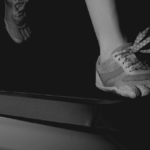UC Berkeley professor of mechanical engineering Oliver O’Reilly and campus graduate mechanical engineering student Nathaniel Goldberg constructed a model showing changes in the shape of spaghetti after it is placed in water, which could help researchers create more human-like robots.
Is Spaghetti the Key to Building a Better Robot?
Look at some spaghetti and you might think lunch. When Oliver O’Reilly looks at spaghetti, he thinks about the future of robotics. Pasta and robots might not seem like natural bedfellows, but O’Reilly, a UC Berkeley professor of mechanical engineering, hopes his research can help engineers construct better models and designs for soft robots.
Mathematical Model Shows Why Spaghetti Curls When Cooked
Scientists, as they are wont to do, have analyzed the way spaghetti curls as it cooks. Researchers Nathaniel Goldberg and Oliver O’Reilly, of U.C. Berkeley’s Department of Mechanical Engineering, used their noodles—we’re so sorry—to put together a mathematical model that accounts for gravity, density, elasticity, and rigidity in cooking “rod-shaped” noodles like spaghetti.
Bipedal Robot Cassie Cal Learns to Juggle
There’s no particular reason why knowing how to juggle would be a useful skill for a robot. Despite this, robots are frequently taught how to juggle things. Blind robots can juggle, humanoid robots can juggle, and even drones can juggle. Why? Because juggling is hard, man! You have to think about a bunch of different things at once, …
This Robot Ostrich Can Ride Around on Hovershoes
Proponents of legged robots say that they make sense because legs are often required to go where humans go. Proponents of wheeled robots say, “Yeah, that’s great but watch how fast and efficient my robot is, compared to yours.” Some robots try and take advantage of wheels and legs with hybrid designs like whegs or wheeled feet, but a simpler and …
ME Alum Christopher Daily-Diamond to Discuss Shoe String Theory at SF Exploratorium on September 7
ME Alum Christopher Daily-Diamond will be presenting at the Exploratorium on Thursday, September 7th from at 9:00pm, during their “After Dark Thursday Nights” event. Shoelace Knots Untied With Christopher Daily-Diamond 9:00 p.m. Phyllis C. Wattis Webcast Studio Sooner or later, most of us have looked down to see that our shoelaces have come undone, despite …
TUNE IN: ME Grad Students Give Whirlwind of TV & Radio Interviews After Their Shoelace Research Goes Viral
ME graduate students Christopher Daily-Diamond and Christine Gregg have had a pretty busy week (or being that they are grad students, perhaps we should say a BUSIER week!). Their research, conducted alongside ME Professor Oliver O’Reilly in the Dynamics Lab, on why shoelaces come untied, has piqued interest around the world after being published in the …
ME Graduate Students Team Up in the O’Reilly Lab to Test Their Shoe-String Theory
Photo by Christopher Daily-Diamond Shoe-string theory: Science shows why shoelaces come untied By Brett Israel, Media Relations brett.israel@berkeley.edu, 510 643-7741 Berkeley – A new study by mechanical engineers at UC Berkeley finally shows why your shoelaces may keep coming untied. It’s a question that everyone asks, often after stopping to retie their shoes, yet one …








